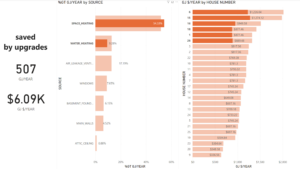An Introduction to Bud Latanville
Data Analysis
I recently completed a certificate program, Upskilling in Data Analysis, through Humber Polytechnic. The course introduced the fundamentals of Data Analytics, from the storage of data in databases or warehouses, to acquiring data from various sources, importing and wrangling the data, then modelling the data and creating reports and dashboards based on user requirements.
At right: example source data, wrangled data in Power BI, and a simple report in PowerPoint to provide answers to stakeholders.
Video
I worked for Fivel Systems Corp. as Senior Content Producer. My role was to work with the Publishing director to create short (5 min. or less) videos with interactive elements to provide basic instruction and testing. Subject matter included current software and hardware technologies used in business. The theory behind Fivel's approach was to not just inform the user, but to ensure that they retained the information given through the use of follow-up processes to help the user recall the information they'd been give.
Other regular duties involved preparing video and other content and metadata for each Learning Moment (video), uploading it to the myfivel.ca web application, and setting "Learning Paths" for users, based on client wishes and Fivel's retention process.
I was also responsible for maintaining the fivel.ca web site.



